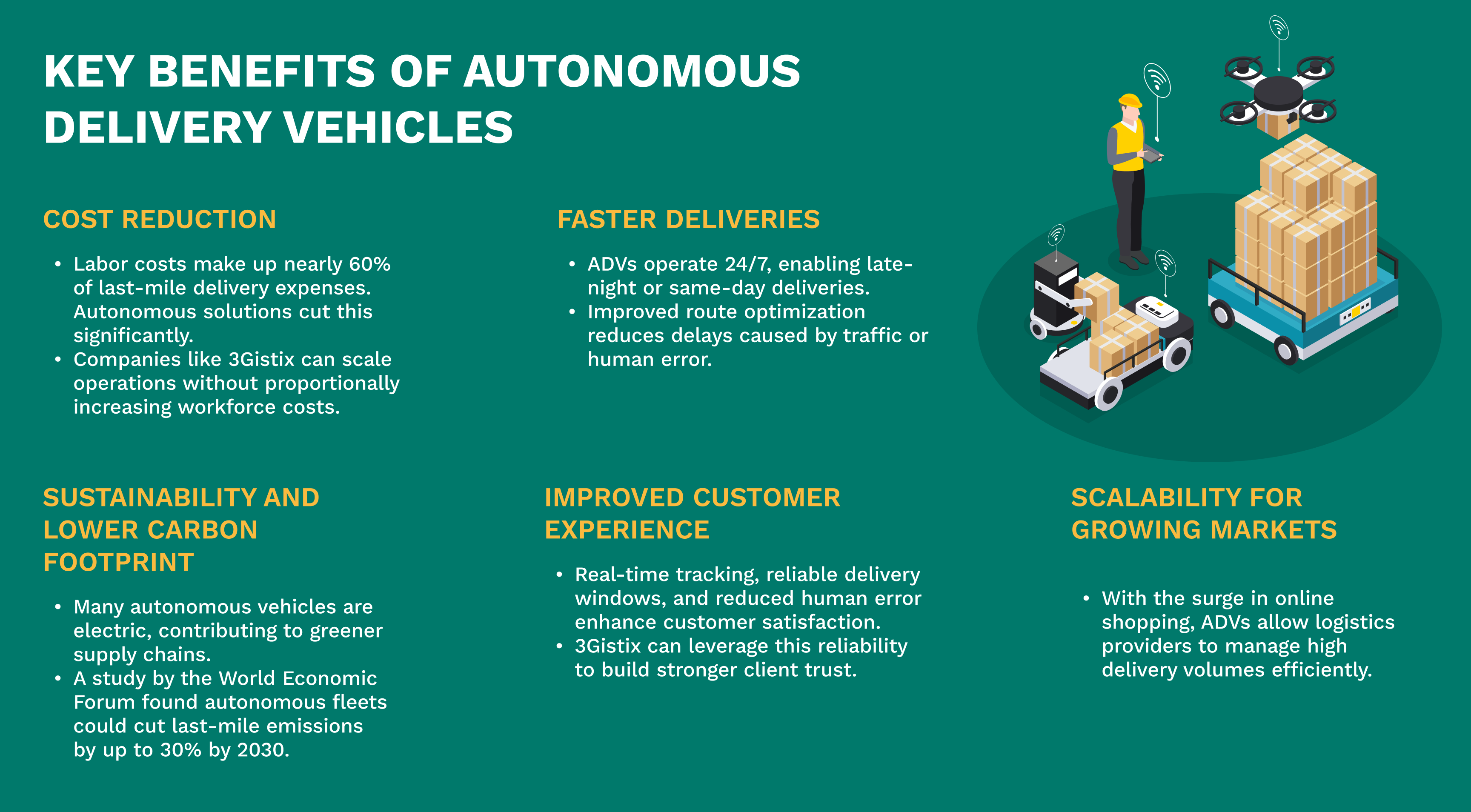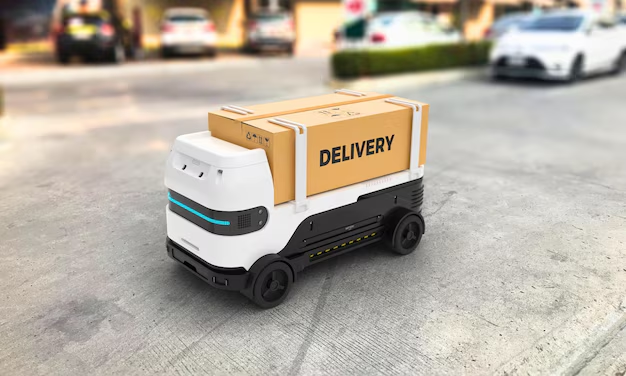The logistics industry is entering a new era, driven by the rapid adoption of autonomous delivery vehicles (ADVs). From self-driving vans to sidewalk robots and drone deliveries, these technologies are reshaping last-mile logistics. For companies like 3Gistix, embracing automation means unlocking efficiency, reducing costs, and delivering better customer experiences.
The Rising Demand for Autonomous Last-Mile Solutions
Last-mile delivery accounts for nearly 53% of total shipping costs (Source: Capgemini Research Institute). With e-commerce projected to grow by 50% by 2030, logistics providers face increasing pressure to deliver faster, cheaper, and more sustainably. Autonomous delivery vehicles are emerging as a practical solution to address these challenges.
According to McKinsey, autonomous delivery could reduce last-mile costs by up to 40% through lower labor expenses, optimized routing, and continuous operation without driver fatigue. This transformation makes it an attractive investment for logistics leaders.


Key Benefits of Autonomous Delivery Vehicles

Cost Reduction
- Labor costs make up nearly 60% of last-mile delivery expenses. Autonomous solutions cut this significantly.
- Companies like 3Gistix can scale operations without proportionally increasing workforce costs.

Faster Deliveries
- ADVs operate 24/7, enabling late-night or same-day deliveries.
- Improved route optimization reduces delays caused by traffic or human error.

Sustainability and Lower Carbon Footprint
- Many autonomous vehicles are electric, contributing to greener supply chains.
- A study by the World Economic Forum found autonomous fleets could cut last-mile emissions by up to 30% by 2030.

Improved Customer Experience
- Real-time tracking, reliable delivery windows, and reduced human error enhance customer satisfaction.
- 3Gistix can leverage this reliability to build stronger client trust.

Scalability for Growing Markets
- With the surge in online shopping, ADVs allow logistics providers to manage high delivery volumes efficiently.
Real-World Analytics and Statistics
By 2035, 80% of deliveries in urban areas could be handled by autonomous vehicles (BCG).
In pilot programs, delivery robots achieved 98% successful delivery rates in structured environments like campuses and residential communities.
Companies using automation in logistics have seen an average 20–30% reduction in operational costs.
Conclusion
The future of last-mile logistics is autonomous. From lowering costs to enhancing customer satisfaction, autonomous delivery vehicles are setting a new standard in efficiency and sustainability. Companies that adopt these innovations early, like 3Gistix, will position themselves as industry leaders capable of meeting the demands of tomorrow’s e-commerce-driven economy.



